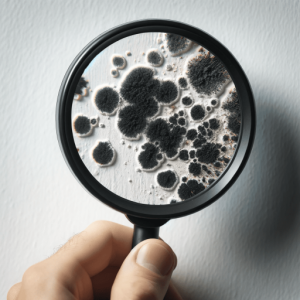How Mould Affects Your Breathing
Struggling to catch your breath? It’s not just the Aussie summer heat that could be causing trouble. Mould lurking in your home might be irritating your respiratory system. Here at Mycotox, we’re diving deep into the connection between mould and breathing problems.
Mould: The Invisible Threat to Your Lungs
Mould thrives in damp environments, and unfortunately, many Aussie homes fall victim to its growth. Mould reproduces by releasing tiny spores that float through the air. Inhaling these spores can trigger a variety of respiratory issues, especially for those with allergies, asthma, or weakened immune systems.
How Does Mould Affect Your Breathing?
Mould spores and byproducts act as irritants and allergens in your airways. This can lead to a range of symptoms, including:
- Coughing
- Wheezing
- Chest tightness
- Runny or stuffy nose
- Itchy or watery eyes
- Difficulty breathing
If you have pre-existing respiratory conditions like asthma, mould exposure can worsen symptoms and trigger attacks.
Who’s Most at Risk?
While anyone can experience breathing problems from mould exposure, some people are more susceptible:
- Children: Their developing respiratory systems are more sensitive to irritants.
- People with allergies: Mould can trigger allergic reactions, leading to worsened allergy symptoms.
- People with asthma: Mould exposure can exacerbate asthma symptoms and cause flare-ups.
- People with weakened immune systems: They’re more prone to infections caused by mould.
Identifying Mould in Your Home
The key to preventing mould-related breathing problems is identifying and addressing mould growth early on. Here’s what to watch for:
- Visible mould: Look for patches of discolouration on walls, ceilings, and around windows. Mould can be black, green, grey, or white.
- Musty odours: A damp, earthy smell can indicate mould growth.
- Signs of moisture: Look for water damage, leaks, or condensation on surfaces.
Creating a Mould-Free Home for Easier Breathing
If you suspect mould growth, take action to remove it and prevent future problems:
- Increase ventilation: Open windows and doors to promote airflow and reduce humidity.
- Address moisture problems: Fix leaky pipes and faucets, and use exhaust fans in kitchens and bathrooms.
- Clean and dry affected areas: Thoroughly clean mouldy surfaces with a fungicide solution. Wear protective gear like gloves and a mask while cleaning.
- Consider professional help: For extensive mould growth, consult a professional mould removal service.
By taking steps to control mould in your home, you can create a healthier breathing environment for yourself and your family. Remember, breathing easier starts with a mould-free home!
Live Well, Breathe Easy
At Mycotox, we’re committed to your health and well-being. If you have concerns about mould or other respiratory issues, consult your doctor. They can help diagnose the problem and recommend the best course of treatment.
Do you have any questions or experiences with mould and breathing problems? Share them in the comments below!


